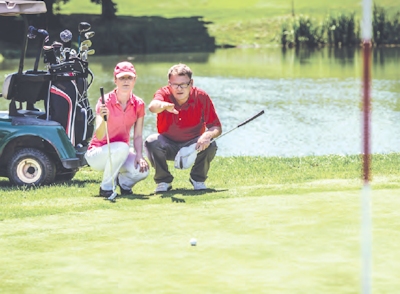Listen To What Your Students Say…
 Have you ever called a business, only to get a long and complicated menu? After several wasted minutes, we finally think we’re going to be rewarded for our patience, only to be told to try again later.
Have you ever called a business, only to get a long and complicated menu? After several wasted minutes, we finally think we’re going to be rewarded for our patience, only to be told to try again later.
Good communication is the key to most businesses. Nothing is more frustrating to customers than a company which uses a menu to avoid dealing with them, or to think the person behind the counter or desk isn’t truly listening to what they have to say.
Teaching golf is no exception. Instructors who aren’t listening to what their students are telling them will earn a smaller clientele, or at worst, a short career. It pays in both customer service and in money earned to pay close attention to what your students are telling you.
For example, members of the USGTF Technical Committee have seen this on a number of occasions: A teacher is attempting to get a student to execute a move that the student is simply not capable of, and eventually the student voices this concern to the teacher. The student is told to hang in there, to keep trying, and eventually he will be able to execute the move correctly.
Well, no he won’t. If he can’t execute it, he can’t execute it. Insisting that the student keep trying is not only a waste of the student’s time and money, but it shows a lack of listening that is extremely critical to success as a teacher.
It always pays to ask a student three very simple questions: Is this something you feel you are physically capable of doing? Is it too uncomfortable? Are you willing to change to this new move or position? Hopefully the answers to all three questions are “yes,” because the student will be all-in in learning what you are teaching. Please don’t underestimate how important this is. If the student has any reservations concerning the three questions, you need to get these reservations resolved.
When it comes to the comfort aspect, it’s important to listen to whether the student’s language is positive, neutral, or negative. If a student says, “This change feels pretty good,” then you know the student is more than willing to make the change. If the language is neutral, such as, “This doesn’t feel too bad,” or, “This feels okay,” then you might have to do some coaxing, but the student is again willing to make the change.
 What any teacher least likes to hear is negative language concerning a change, such as, “This feels awful!” Unfortunately, most teachers will say, “That’s because it’s new. After awhile it won’t feel so bad.” The problem with this is that the student will not accept this change as long as that’s the mindset he or she has. A good way of dealing with this is to have the student do the new move or position your way once, and their way twice. After awhile, they will probably tell you that it doesn’t feel so bad, so get them to alternate your way with their way. It will be only a matter of time before they are willing to fully adopt your way and discard their old habit.
What any teacher least likes to hear is negative language concerning a change, such as, “This feels awful!” Unfortunately, most teachers will say, “That’s because it’s new. After awhile it won’t feel so bad.” The problem with this is that the student will not accept this change as long as that’s the mindset he or she has. A good way of dealing with this is to have the student do the new move or position your way once, and their way twice. After awhile, they will probably tell you that it doesn’t feel so bad, so get them to alternate your way with their way. It will be only a matter of time before they are willing to fully adopt your way and discard their old habit.
Some teachers will tell us that a new move should feel uncomfortable; otherwise, the student is not truly making a change. We beg to differ. The new move should feel different, not uncomfortable. We understand what these teachers are saying, but a new move or position that is downright uncomfortable is one that simply won’t take.
Another important aspect of communicating is through body language. USGTF president Geoff Bryant is always cognizant of this, stressing this point to the examining staff throughout the years. He’s very quick to notice if people’s attention spans are beginning to wane.
In a group setting, it’s not the greatest endorsement of your teaching if you are lecturing and a couple of group members step to the side to practice their swings – and this has happened in the past! Sometimes, this is the fault of the students, who may have short attention spans, but more often it is because the teacher needs to change his or her approach. Students in this case are clearly communicating to the teacher that the teacher’s approach is not working for them. Some students also make their displeasure known by looking at things in the distance or looking around.
You would think that this is common sense and that any teacher would notice this and be able to deal with it, but surprisingly, this is not the experience of the technical Committee. Many teachers the committee has observed seem oblivious to students tuning them out. One reason may be that the teacher is not really focused on the student and may be going through the motions, or the teacher is more focused on the instruction he or she is giving and not focused on the student.
Be genuinely interested in your students, both as golfers and people, and you will be providing maximum customer satisfaction – a lesson too many businesses need to learn these days.




